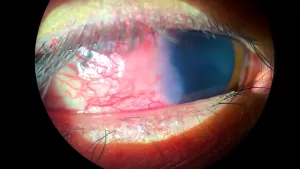Eyelashes not only serve an aesthetic purpose, they are also a natural protective barrier for the eyes. They help prevent dust, dirt, and small external agents from coming into direct contact with the ocular surface. However, like any other part of the body, eyelashes are not immune to problems, and one of the most common is infection in this delicate area.
This type of infection may seem harmless at first, but if left untreated, it can become more complicated and cause quite unpleasant discomfort. From redness and pain to the appearance of small bumps on the eyelid, these are signs that shouldn’t be ignored.

📌 IMPORTANT: You’ll find the video related to this story at the end of the article.
Why do eyelash infections occur?
The most common cause is blockage of the sebaceous glands located on the edge of the eyelid. When these become blocked, oil and bacteria accumulate, causing inflammation and even the formation of styes. It can also be due to blepharitis, a condition that causes chronic inflammation of the eyelids and promotes the development of repeated infections.
Poor eye hygiene, excessive use of makeup without proper removal, or sharing beauty products such as mascara are factors that significantly increase the risk. Even the habit of rubbing your eyes with dirty hands can be enough to cause an infection.
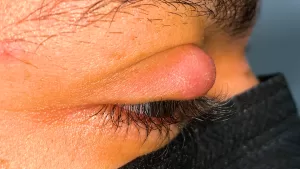
Most common symptoms:
When an eyelash infection develops, the body makes it evident through several clear signs. Among the most common are:
- Redness around the eye.
- Pain or tenderness in the eyelid.
- Localized swelling, which sometimes develops into a small, painful lump.
- Constant tearing.
- Sensation of having grit or a foreign body in the eye.
- In some cases, yellowish secretions that can stick the eyelashes together.
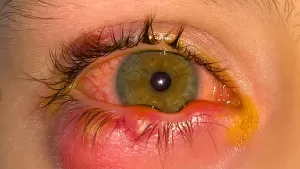
It is important not to confuse these symptoms with simple allergies or temporary irritations, as the infection requires specific care.
How to Treat an Eyelash Infection
The first recommendation is to avoid the temptation to squeeze or pop the lump, as this only worsens the inflammation and can spread the infection. At home, you can apply warm compresses several times a day to help reduce inflammation and naturally drain the clogged gland. Maintaining proper hygiene is essential: gently clean the area with warm water and, if necessary, with specific products recommended by your doctor.
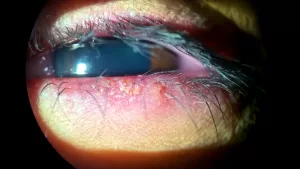
If you experience severe pain, fever, or if the infection doesn’t improve within a few days, it’s best to see an ophthalmologist. The specialist may prescribe antibiotic drops or ointments, depending on the severity of the condition.
Prevention: The Step We Shouldn’t Skip
To prevent an eyelash infection from appearing or recurring, there are some simple but very effective measures:
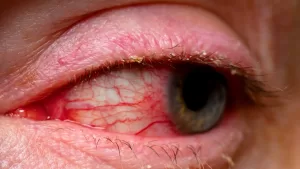
- Remove eye makeup every night.
- Do not share cosmetics or applicators.
- Wash your hands before touching your face or eyes.
- Change mascara and eyeliner regularly, as they accumulate bacteria over time.
- Maintain a balanced diet and good hydration, as the health of your skin and eyes also affects your immune system.
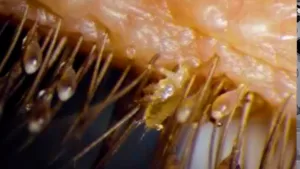
A more common problem than it seems.
Although many people consider it a minor issue, eyelash infections can become a chronic nuisance if the appropriate measures are not taken. Paying attention to our body’s signals and maintaining basic hygiene habits can make the difference between a temporary problem and a more serious complication.
In conclusion, taking care of your eye health goes beyond having beautiful eyelashes. It’s about protecting one of the most sensitive and exposed areas of the body. An eyelash infection is a clear warning that something isn’t right, and listening to these signs is the best way to protect our eyes.
